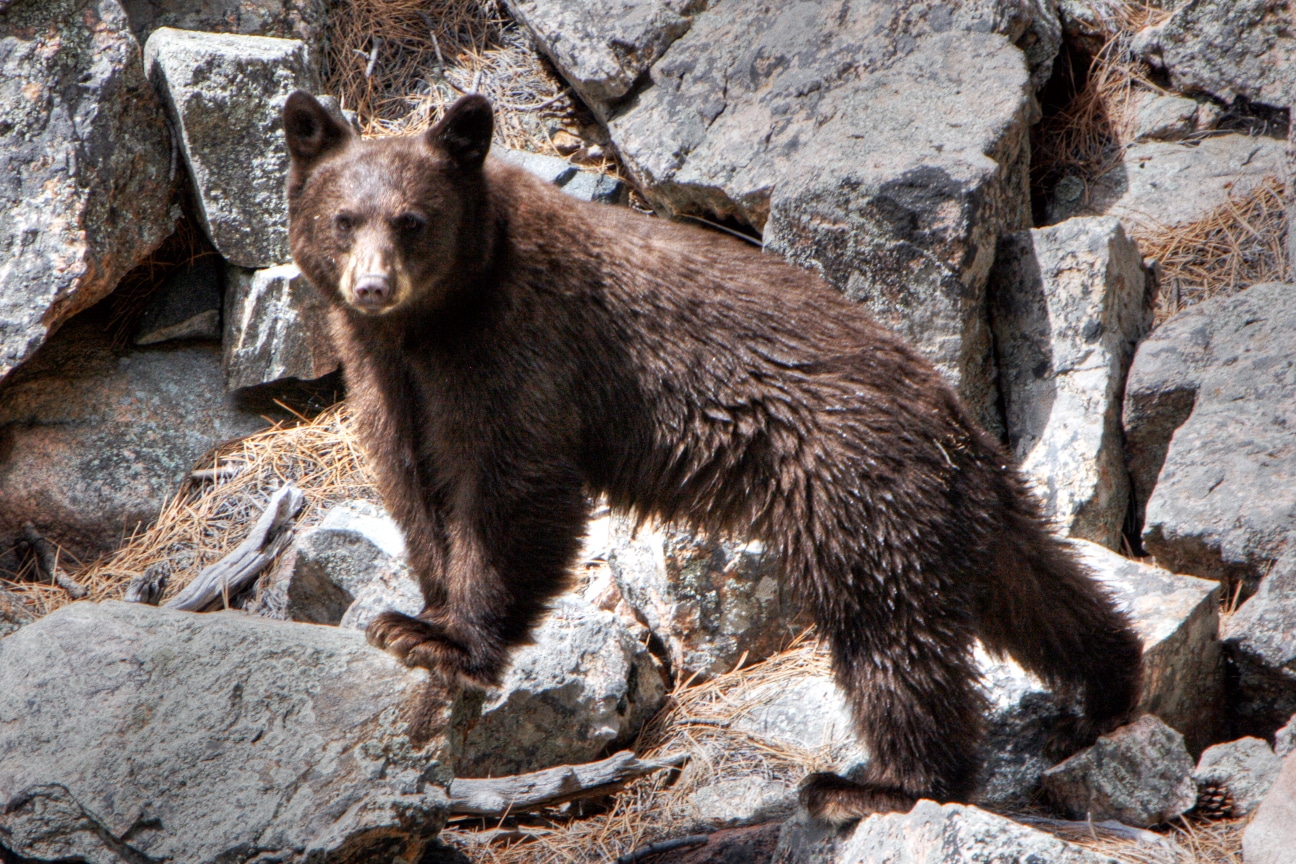While bear sightings aren’t rare in Colorado, fatal attacks are, thankfully. Just a handful of deaths have been attributed to bears in the state since the 1970s and bears typically avoid interacting with humans.
Colorado’s most famous bear encounter resulted in the death of the bear and not the man it brutally attacked. From a fatal incident at the Denver Zoo in the 1930s to a terrifying confrontation now remembered around the world involving a grizzly bear in the state, these are some of Colorado’s more notable bear attacks.

Summer 1934 – Denver Zoo
When one thinks about fatal bear attacks in Colorado, disastrous camping trips and unwanted visitors lurking around cabin driveways come to mind. But one of the state’s most terrifying and well-known attacks happened in the heart of Denver and not in a mountainous, sparsely populated area.
In the summer of 1934, a 76-year-old zookeeper named Charles Wyman was attacked and killed after spraying down two captive bears to help them cool down. They were later shot and killed by authorities.
Spring 2021 – Durango
In the spring of 2021, a woman who was walking her dogs was mauled to death in an area north of Durango, Colorado. When her boyfriend arrived back at their apartment and found their dogs left outside unattended, he became worried and eventually found her body on the side of a highway.
The US Department of Agriculture discovered a female black bear nearby and euthanized it. Officials never determined what could’ve provoked the attack, but stressed the victim was not to blame.
Summer 1971 – Grand Lake
A small group was camping on private property north of Grand Lake when a hungry bear entered their campsite and killed one. One woman was bitten on the back but survived the attack. The bear was eventually driven away when one of the campers struck it in the face with a frying pan.
This incident is known for being the first fatal bear attack in Colorado in modern times.
Summer 2009 – Ouray
Donna Munson was an elderly resident living in the town of Ouray who had a habit of feeding bears dog food, fruit, and yogurt from her back porch. Munson had even built a wire cage at the back of her home where she would feed the bears from.
Staff from the Colorado Division of Wildlife had reportedly warned her against doing this so many times that she eventually stopped taking calls from them altogether. And she went so far as to try to legally ban them from entering her property.
When it was confirmed that Munson was attacked and eaten by a bear outside her home in the summer of 2009, locals were deeply saddened and horrified, but the news didn’t come as a surprise.
Fall 1979 – Pagosa Springs
Grizzly bears once roamed across North America in vast numbers and were considered to be one of the continent’s most lethal and ferocious predators. But by the 1970s, they’d been driven out of Colorado so completely that local officials declared them extinct.
On September 23rd, 1979, archer Ed Wiseman was hunting for elk in the San Juan Wilderness south of Pagosa Springs and was charged by a 400-pound grizzly bear before he had the opportunity to release his arrow. He was jumped on by the bear, and then picked up and violently shaken.
Wiseman had the unbelievable fortune of being within reach of one of his arrows, which he grabbed and stabbed the bear in the neck and heart. It stumbled away and eventually died. Wiseman was rescued the next morning after nearly succumbing to his injuries and enduring a night of near-freezing temperatures.
The bear Wiseman killed is widely thought of as the state’s last grizzly bear.
Summer 1993 – Buena Vista
In August 1993, 24-year-old Colin McClelland shot a bear who had tore off the door to his camping trailer. Wounded and aggravated, the bear attacked and killed McClelland before he could fire another shot. Officials blamed a local drought for removing the bear’s preferred food source and inspiring it to look elsewhere for food. Bears rarely attack humans without provocation unless it’s a desperate survival situation.
Lucky for Coloradans and the many people who travel here every year to enjoy the state’s mountains, bear attacks are exceedingly rare. If you do happen to see one in the wild, the National Park Service has helpful advice on what to do. Common sense applies while camping and hiking, such as not leaving food or trash out and keeping a safe distance on the rare occasion to catch a glimpse of a bear in the wild.


 12 Best Tourist Attractions in Colorado
12 Best Tourist Attractions in Colorado